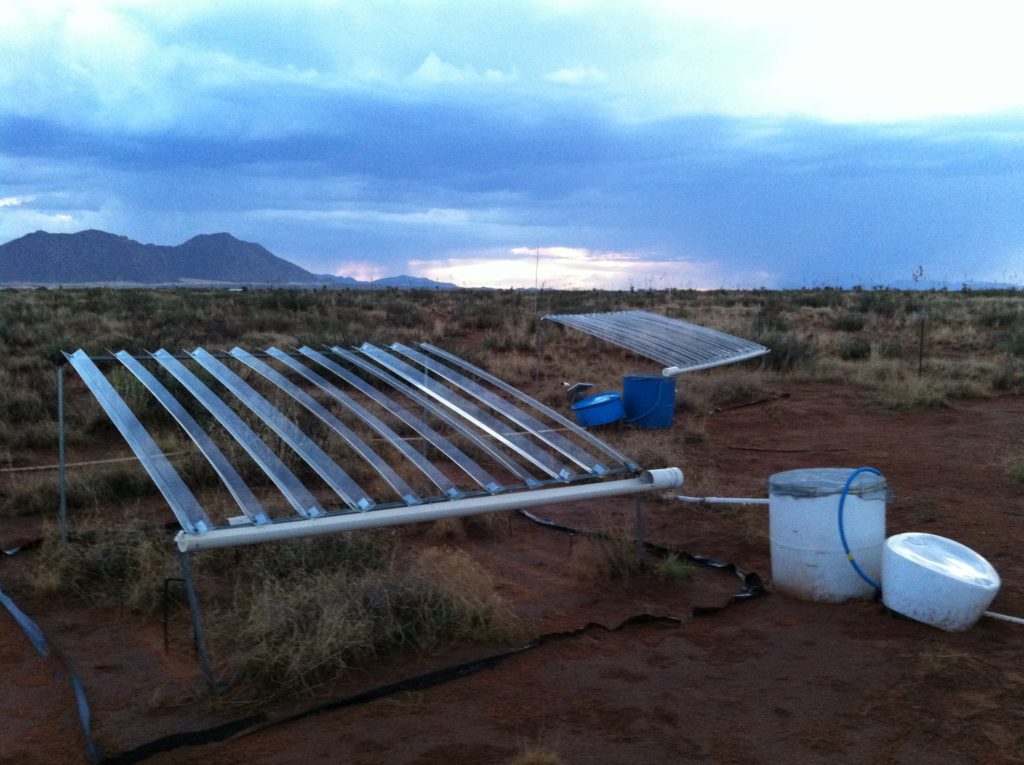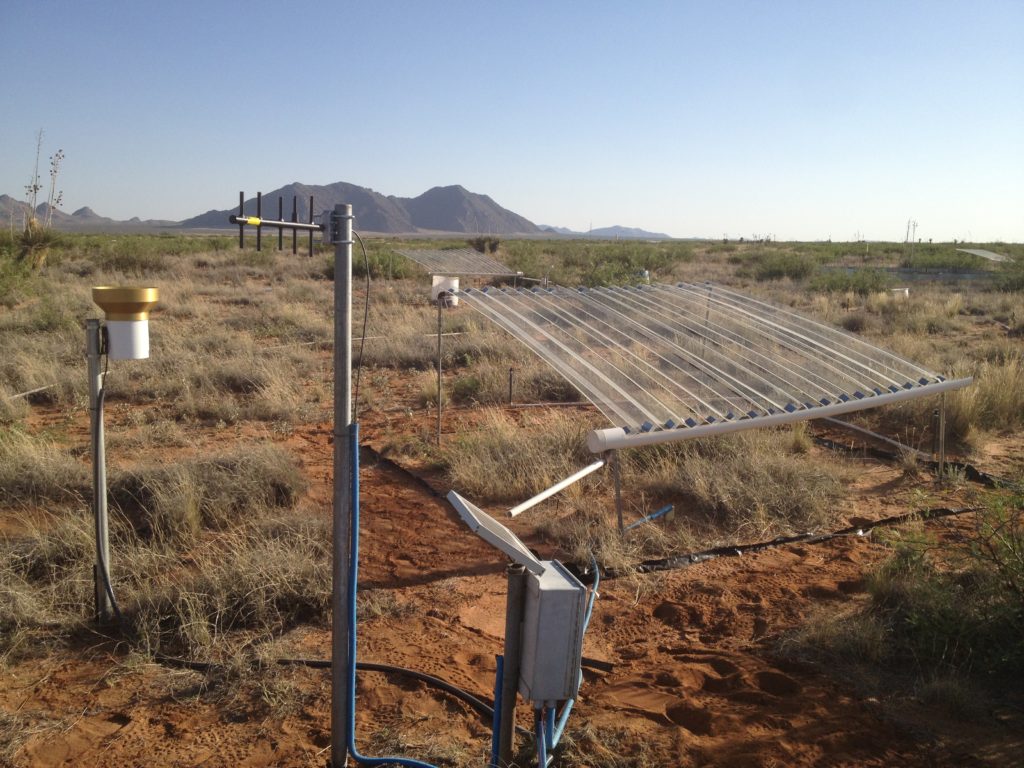Climate change, extreme events, and other global change disturbances have profound impacts on ecosystems. A number of ongoing manipulative experiments and broad-scale syntheses at the Jornada Basin LTER are untangling global change effects on dryland vegetation and soils, and are informing ecological forecasting for the region and beyond.
Research Highlights


Effect of Interannual Precipitation Variability on Dryland Productivity
Climate change is a major driver of transitions in drylands, and it is expressed mostly in changes in the amount and variability of precipitation with consequences for local scale relationships between ecosystem structure and function. Changes in community structure and species composition can amplify the effects of extreme events via wind and water erosion (Okin et al. 2018). The frequency, intensity, and duration of extreme events (drought, heavy rainfall) are expected to increase in the future. We have been conducting long-term experiments (> 12y) in a mixed black grama-mesquite dominated ecosystem where we either manipulate: (1) PPT amount (-80%, ambient, + 80%) in a full factorial design with/without N fertilization or (2) PPT interannual variability via altering the sequence of wet or dry years under a constant PPT regime (CCE). We showed that after 12 years of irrigation representing wet periods and added N, there was no effect of fertilization even though we detected additional N in the soil and leaves. Additionally, we found that increased inter- annual PPT variability decreases ANPP regardless of PPT amount (Gherardi and Sala 2015a) and prolonged drought reduces the ANPP and cover of grasses more than shrubs (Gherardi and Sala 2015b).
PI: Osvaldo Sala